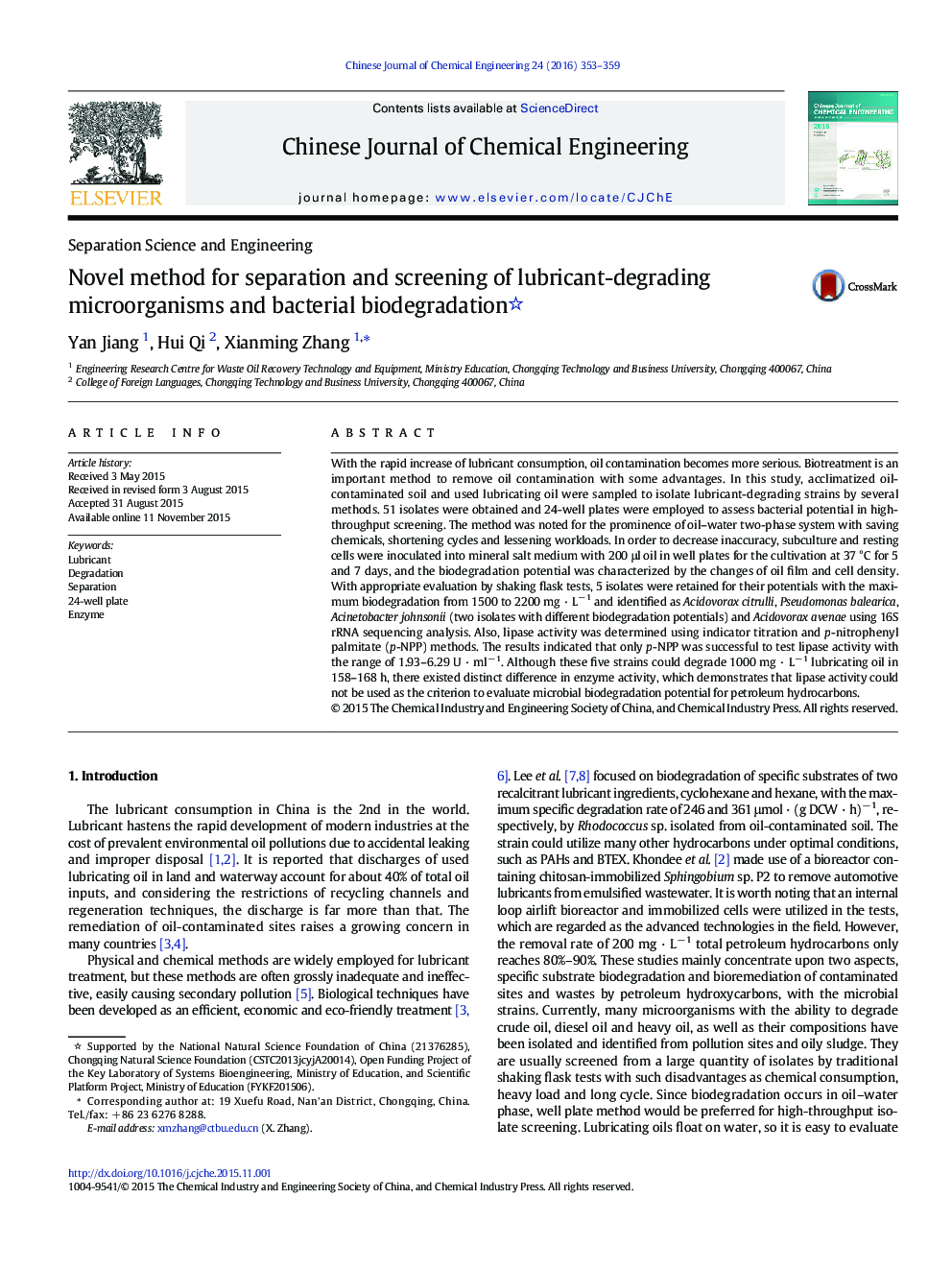| کد مقاله | کد نشریه | سال انتشار | مقاله انگلیسی | نسخه تمام متن |
|---|---|---|---|---|
| 165962 | 1423390 | 2016 | 7 صفحه PDF | دانلود رایگان |
With the rapid increase of lubricant consumption, oil contamination becomes more serious. Biotreatment is an important method to remove oil contamination with some advantages. In this study, acclimatized oil-contaminated soil and used lubricating oil were sampled to isolate lubricant-degrading strains by several methods. 51 isolates were obtained and 24-well plates were employed to assess bacterial potential in high-throughput screening. The method was noted for the prominence of oil–water two-phase system with saving chemicals, shortening cycles and lessening workloads. In order to decrease inaccuracy, subculture and resting cells were inoculated into mineral salt medium with 200 μl oil in well plates for the cultivation at 37 °C for 5 and 7 days, and the biodegradation potential was characterized by the changes of oil film and cell density. With appropriate evaluation by shaking flask tests, 5 isolates were retained for their potentials with the maximum biodegradation from 1500 to 2200 mg · L− 1 and identified as Acidovorax citrulli, Pseudomonas balearica, Acinetobacter johnsonii (two isolates with different biodegradation potentials) and Acidovorax avenae using 16S rRNA sequencing analysis. Also, lipase activity was determined using indicator titration and p-nitrophenyl palmitate (p-NPP) methods. The results indicated that only p-NPP was successful to test lipase activity with the range of 1.93–6.29 U · ml− 1. Although these five strains could degrade 1000 mg · L− 1 lubricating oil in 158–168 h, there existed distinct difference in enzyme activity, which demonstrates that lipase activity could not be used as the criterion to evaluate microbial biodegradation potential for petroleum hydrocarbons.
Graphic abstractSome lubricant-degrading bacteria are isolated from used lubricating oil and acclimatized lubricant-contaminated soil by several isolation methods. 24-well plate method is employed to evaluate these isolate potentials to biodegrade lubricating oil based on oil–water two-phase system in high-throughput screening. 5 isolate biodegradations are studied with the maximum biodegradation from 1500 to 2200 mg · L− 1. Lipase activity is determined by indicator titration and p-nitrophenyl palmitate (p-NPP) methods. The results indicated that only p-NPP is successful to test lipase activity with the range of 1.93–6.29 U · ml− 1. Besides, lipase cannot be used as the criterion to evaluate microbial biodegradation potential for petroleum hydrocarbons.Figure optionsDownload as PowerPoint slide
Journal: Chinese Journal of Chemical Engineering - Volume 24, Issue 3, March 2016, Pages 353–359
